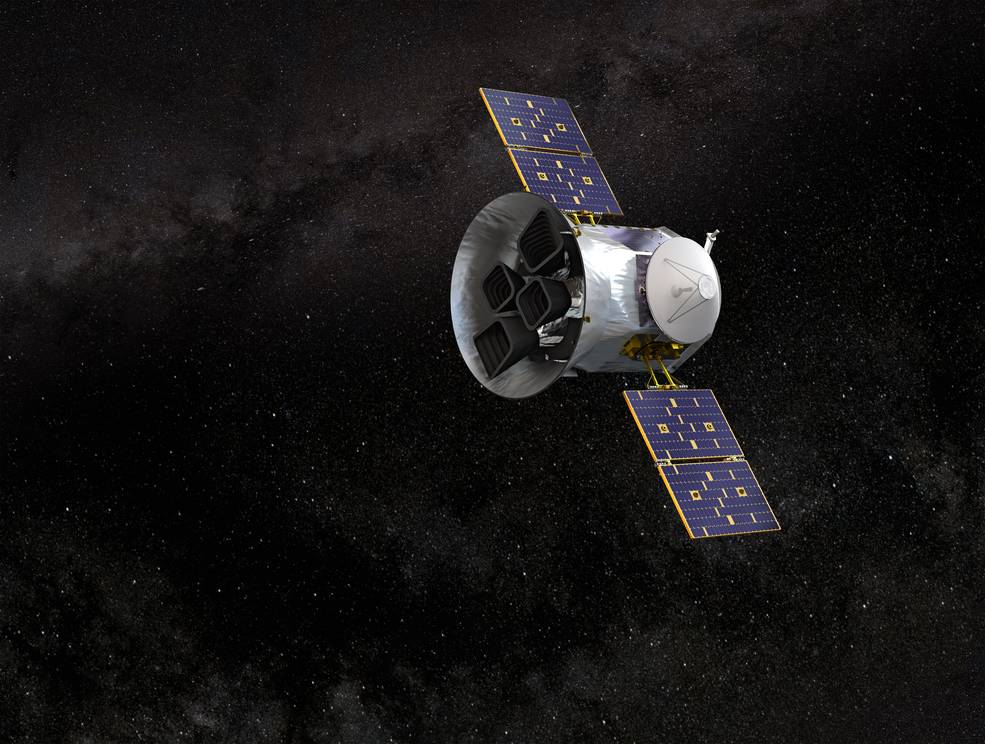
The object is unique and for the time being very difficult to interpret.
Researchers write that in the magazine The Astronomical Journal. The study centers on TIC 400799224, a binary star system in which planet hunter TESS has spotted something remarkable.
dips
TESS (an abbreviation for Transiting Exoplanet Survey Satellite) was launched in 2018. The satellite stares at nearby, bright stars for a long time, hoping to witness their luminosity diminish with some regularity. Because that could mean that around those stars a planet orbits that every now and then blocks some of the starlight because it moves between the parent star and TESS. In addition, you can expect that the dips in brightness of that parent star occur regularly and last the same time each time – because the planet moves around the star at a more or less constant speed. In addition, you can also expect that the brightness decreases equally sharply every time, because that decrease in brightness is dictated by the size of the planet and it will not change quickly either.
TESS has already discovered more than 4,500 candidate exoplanets in this way. And also in TIC 400799224, the planet hunter has seen the brightness of one of the two stars decrease. And that observation immediately caught the attention of scientists, as the TESS data reveals that the brightness of one of these stars decreased by as much as 25 percent in just a few hours. And while the dips in brightness do occur at regular intervals—about every 19.77 days—the duration varies each time. And the degree to which the star’s brightness decreases also varies.
Unique
And with that, researchers have come across a very special object, says researcher Brian Powell. “The property is completely unique. It is somewhat reminiscent of the infamous Boyajian’s Star (see box), but there are also some crucial differences that make TIC 400799224 a category in itself.”
With TIC 400799224 we now seem to have added another mystery, because the decreases in brightness that scientists see in this binary star system are also difficult to explain. “We can’t say for sure about its nature,” Powell emphasizes.
Hypothesis
But of course there are hypotheses. For example, based on the fact that the decreases in brightness occur every 19.77 days, the researchers assume that they are caused by something orbiting one of the two stars. Given that the decreases in brightness are not always the same and do not always last the same length, this cannot be an ‘ordinary’ exoplanet. But what could it be? In their study, the scientists come up with three hypotheses, one of which seems quite strong. “Based on the regular decreases in brightness, there must be an object orbiting the star surrounded by an amorphous cloud capable of blocking a substantial amount of light (at least 37 percent of the light from the parent star, ed.). keep,” says Powell. “And it is most likely that such a cloud consists of dust.”
Constant Collisions
Not only is that cloud of dust enormous, but in the six years that researchers have now studied TIC 400799224 with the help of data from TESS and a few other observatories that have been operating for some time, it has also stood up bravely. This can be deduced, among other things, from the fact that the decreases in brightness start regularly. It is striking, because you would expect the dust to gradually lift. The fact that this is not happening indicates that the dust cloud is constantly replenished. “I think what we’re dealing with here is a disintegrating planet moving in an area of other, smaller objects — possibly debris from the planet or other objects that collided with the planet before.” And collisions between that planet – or what’s left of it – and the surrounding debris generate the dust that causes the significant decreases in brightness. “The periodicity (of those decreases in brightness, ed.) does require that those repetitive collisions that generate the dust also happen in the same part of the orbit every time,” Powell added.
Follow-up research
It remains a hypothesis. “I must emphasize that we can only present a few possible theories, none of which have been proven yet.” More observations are needed to find out exactly what is going on in TIC 400799224. “Repeated observations – possibly over a period of a year or more – at different wavelengths during the period when we expect a decrease in brightness are needed to determine the determine chemical composition of the substance and better understand its behavior.” At this stage, Powell does not rule out the possibility that such follow-up observations will lead to surprises. “It’s important to test the theories we set out in our study as more data becomes available, and that process could also provide a completely different explanation.”
It’s mysteries like this that make astronomers’ hearts beat faster. Not in the least, because strange phenomena can lead to new insights. “It’s always important to research unique activities. This will give us a better idea of the wide range of behaviors we can expect in space and expand our understanding of the universe.”
Source material:
“The Mysterious Dusty Object Orbiting TIC 400799224– Center for Astrophysics Harvard & Smithsonian
Interview with Brian Powell
Image at the top of this article: NASA